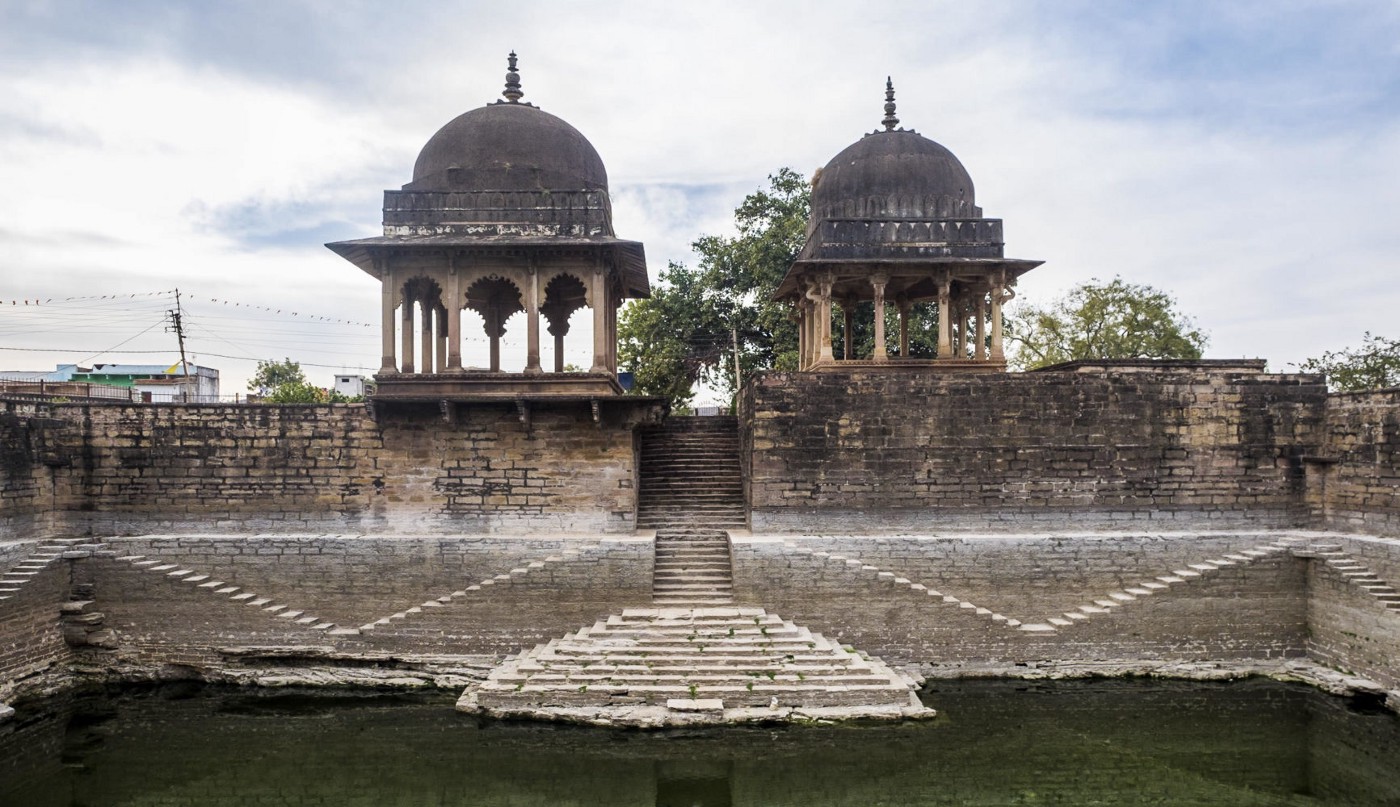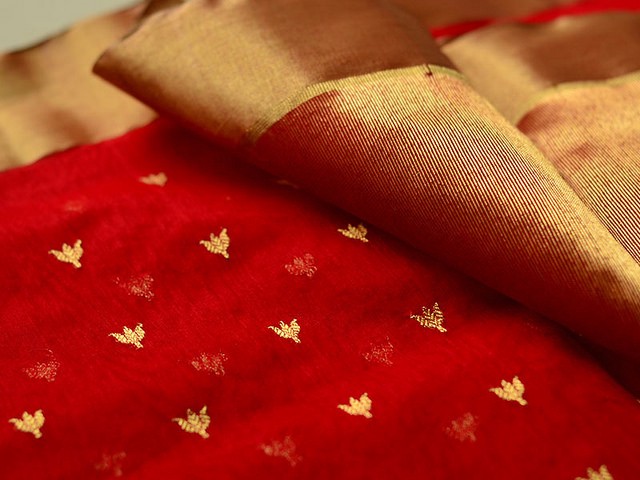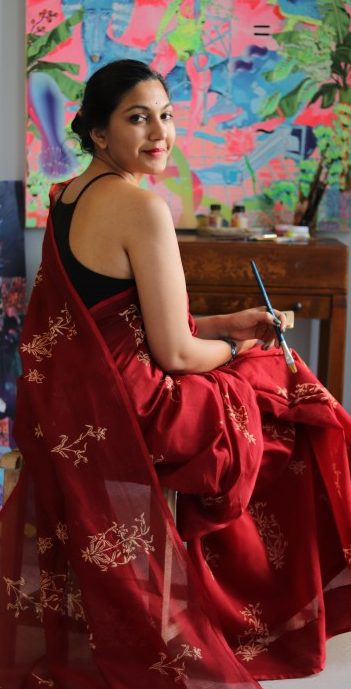It’s fan following includes craft aficionados, movie stars, and folk like you and me. The timeless Chanderi – be it in the form of a sari, or fabric or a wrap now has a special place in our hearts and our ethnic Indian wardrobe.
The weave is from a small town of the same name in Ashok Nagar district of Madhya Pradesh and was once used to dress royalty. Local folk say that Chanderi is so light – that it can described as “ bunni hui hawa ” or woven air ! Known for its lovely and light weight fall, buttery feel and subtle sheen – Chanderi is perfect for India’s warm and tropical climate.

The town of Chanderi in Madhya Pradesh was known for weaving of the fabric and it became famous for this reason in the 11th century. Due to its central location – the area was part of the most important trade routes of the time, due to its proximity to the ancient ports of Gujarat, and the kingdoms of central India and the Deccan.
Chanderi fabric is also mentioned in mythological and historical texts such the Mahabharata, wherein it is suggested it was introduced by Lord Krishna’s cousin Shishupal. During the time of the Mughals – and from the historical text called Maasir-i-Alamgiri, we get to know that Aurangzeb ordered the use of Chanderi fabric embroidered with gold and silver for making ceremonial robes.
Chanderi fabric was used to make “pagdis” or turbans for kings as well as saris and dhotis. In 1945, a silk yarn that came from Japan was introduced to the weavers, creating the blended cotton-silk weave. Since recently, weavers have also started weaving silk on silk Chanderi to cater to the high-end luxury market.


Even today – the centuries-old Chanderi weaving technique remains unchanged and weavers produces three kinds of fabrics: in pure silk, cotton and in silk cotton. The fabric is further embellished with woven “zari” motifs that create its shimmering appearance on a glossy yet transparent fabric base – and makes it a perfect choice for festive and occasion wear – in summers. Motifs woven include geometric designs, floral patterns, fruit and bird motifs.
The traditional colour palette has also seen a change courtesy craft revivalists who have brought back the weave to our modern lifestyles. Moving from traditional red, purple, pale blue, pistachio green, white and black – this new set of colours include yellow, lime green, midnight blue and pink.
Now a favourite fabric amongst designers for creating light-weight but statement couture ensembles – Chanderi’s versatility and availability in terms ready to wear and fabric yardage – make it accessible for most.
We’re so proud to be able to play our role in sustaining the timeless Chanderi weave in its contemporary avatar. Because craft can stay alive only when we all make the effort to patronise it and hence keep it alive.
Explore our selection of Chanderi across Saris, Stoles, Kurtis and more here
Image Credits & Captions
The ancient heritage of Chanderi by Sampurna Majumdar
Close up of a red Chanderi drape woven with traditional gold zari “butis” by Sampurna Majumdar
